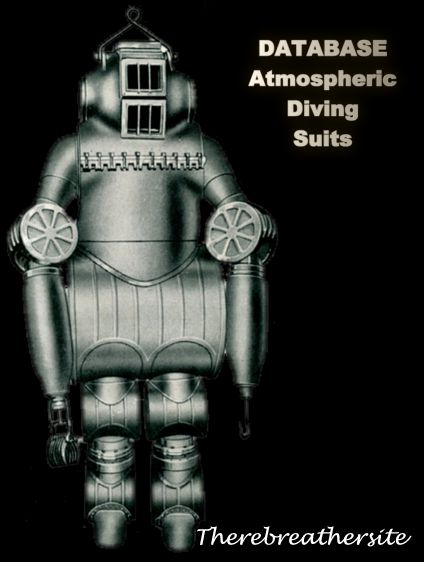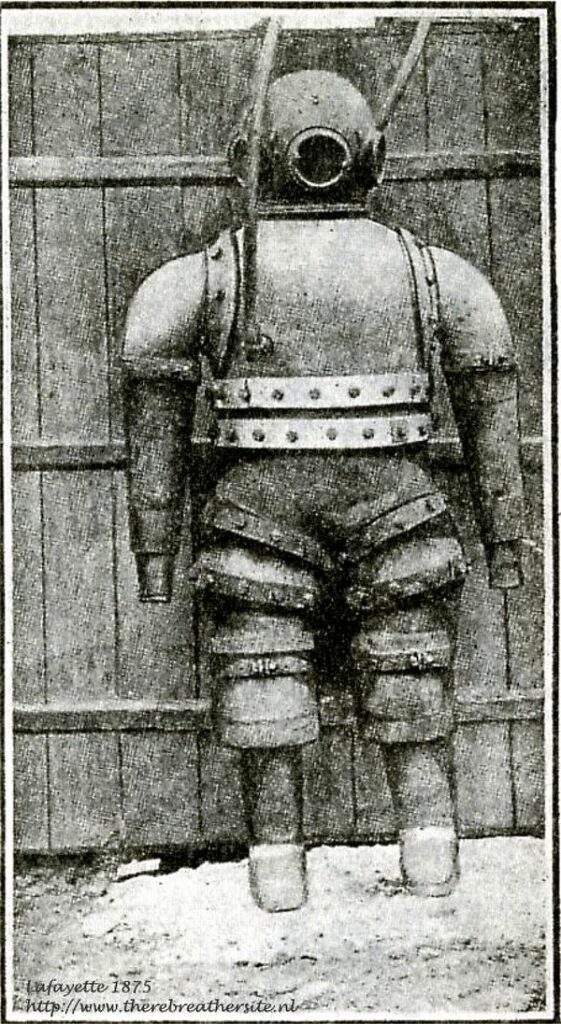
Siebe Gorman declared that a diving armour made of metal and leather was build in 1875 by Lafayette.
The hands are free and the legs were covered along the legs.
From Deep Diving and Submarie Operations by Robert H. Davis, sixth edition 1955:
Lafayette’s armour was a rigid, watertight chamber in the shape of the Siebe closed diving-dress and helmet, and was made strong enough to withstand the waterpressure when air at atmospheric pressure only was supplied to it. The designer’s object in making it in this form was evidently to reduce to the minimum the area exposed to water pressure and storng currents. Two air tubes were provide for ventilation purposes, air being pumped down one to the helmet and returning to the surface by the other. Today, of course, we should not use this method of air supply, but should provide, instead, breathing apparatus on the self-contained regenerative system. No attempt was made to articulate the limbs. The utility of the apparatus would, therefore, appear to have been limited to observational purposes.

| Source: Stelzner Tauchertechnik: Nach einer Mitteilung der Firma Siebe, Gorman –baute 1875 das aus Metall und Leder bestehende Gerat Bild 45 (page 41) Die Hande waren Frei, die Beine wurden anscheinend in der Langsrichtung gedruckt. |
| After 1872, experiments were made with a form of rigid metal diving dress or, more appropriately, diving armour. An early example, the design of wich followed, the shape of the human body, was produced in 1875 by a Frenchman named Lafayette. About three years later the French brothers Carmagnolle designed a complete suit of heavy armour incorporating mechanical joints, and actually produced one in 1882. |
| I was not able to find more information about Lafayette. He seems to be a north American but I could not find any evidence. I would be very pleased to receive additional information about Mr. Lafayette. |

Therebreathersite was founded by Jan Willem Bech in 1999. After a diving career of many years, he decided to start technical diving in 1999. He immediately noticed that at that time there was almost no website that contained the history of closed breathing systems. The start for the website led to a huge collection that offered about 1,300 pages of information until 2019. In 2019, a fresh start was made with the website now freely available online for everyone. Therebreathersite is a source of information for divers, researchers, technicians and students. I hope you enjoy browsing the content!
